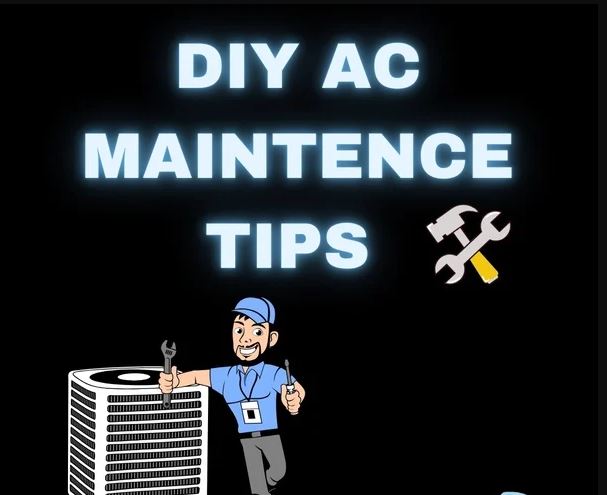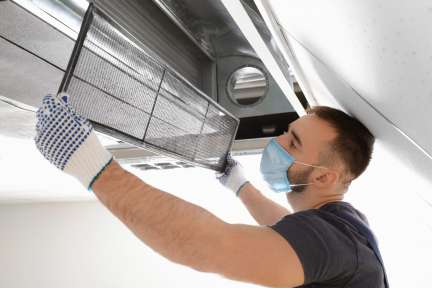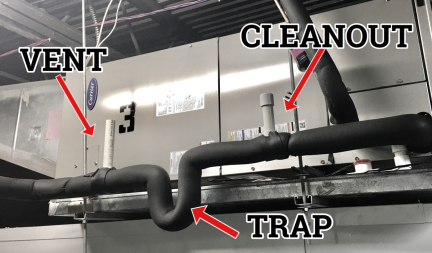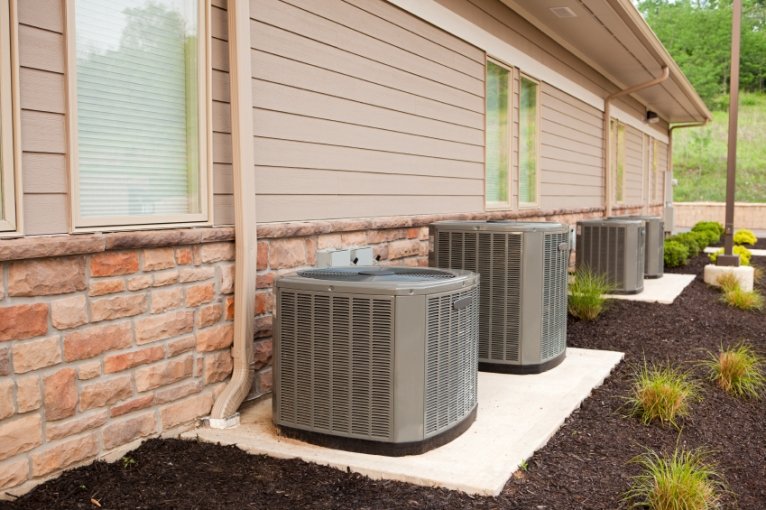Air conditioners are significant in keeping an indoor climate within a comfortable level, especially in the hot season. However, to make your air conditioner work at peak efficiency, some maintenance should be done. Maintenance can help lengthen the service life of the AC unit, increase its performance, and limit the occurrence of expensive repairs. While it’s always beneficial to call in a professional for more complex repairs, there are plenty of DIY tasks you can perform to keep your air conditioner in top shape. In this blog, we will discuss a series of advanced and unique air conditioning maintenance tips that will help you optimize your system’s performance in the USA.
1. Clean the Air Filters Regularly
The air filter is one of the most critical parts of your air conditioner. It traps dust, dirt, and other debris from circulating through your home. A clogged filter reduces airflow, strains the system, and decreases efficiency, leading to higher energy bills. Therefore, cleaning or replacing your air filter regularly is essential.
How to Clean or Replace Air Filters:
- Turn off the AC unit for safety
- Remove the filter from its housing compartment, which is usually located near the return air vent or inside the unit.
- If it is a washable filter, gently rinse it with warm water or use a vacuum cleaner with a soft brush attachment to remove dust and debris.
- Replace disposable filters with new ones if they are heavily soiled.
- Check the size and model of your filter to ensure proper fit when replacing it.
New Tip: Upgrade to high-efficiency filters, like HEPA filters, that trap even more particles to improve the air quality in your home.
2. Keep the Coils Clean For Air Conditioning Maintenance
Your evaporator and condenser coils are the heart of your air conditioner. The evaporator coils draw heat from the air, while the condenser coils expel it outside. The efficiency of your system is significantly reduced if the coils get dirty because they lose the ability to transfer heat.
How to Clean Coils:
- Shut off the AC and remove the power supply to the unit.
- For the evaporator coils, use a soft-bristled brush attachment to vacuum away dust or debris.
- Any bent fins can be straightened with a fin comb, and this will increase airflow.
- For the condenser coils, dirt, leaves, and other debris should be removed from the unit’s exterior.
- Spray the coils with a specialized coil cleaner that will remove grime or stubborn buildup.
- If the coils are extremely dirty, you will need to call a professional cleaner.
New Tip: Keep the area around the outside condenser unit free of debris, including fallen leaves, dirt, and branches. This will keep it from impeding the condenser’s ability to throw out heat more efficiently.
3. Check the Refrigerant Level
The refrigerant is the substance inside your AC system responsible for absorbing and releasing heat. Low refrigerant levels can make your air conditioner run inefficiently and strain the compressor, possibly causing it to fail prematurely.
How to check the refrigerant level?
- While checking refrigerant levels is not an easy process, it would be advisable to monitor signs that might indicate low refrigerant level, like loss of cooling capacity or ice on the evaporator coils.
- Then, when such symptoms appear, call a professional who has an authorized license for the same work to inspect and recharge the refrigerant.
New Tip: Leaks in the refrigerant system could be symptoms of a larger issue. If your system often calls for a refrigerant top-off, consider hiring a professional technician to check for and seal leaks to possibly prevent future problems.
4. Check and Flush the Condensate Drain
The condensate drain is the means by which excess moisture pulled from the air as it cools is removed. If the drain becomes clogged, water may pool around your AC unit, leading to water damage, mold, or even electrical damage.
How to Inspect and Clean the Drain:
- Locate the condensate drain line. It’s usually a PVC pipe near the indoor unit.
- Inspect the line for blockages or leaks.
- Use a wet/dry vacuum to clear any debris from the pipe.
- Flush the drain with a mixture of water and bleach to eliminate mold and algae growth.
- Check the outdoor drainage point to ensure that the water is flowing freely.
New Tip: Install a condensate drain line float switch to automatically shut off your AC if the drain line becomes clogged, which prevents water damage and system failures.
5. Check the Thermostat Settings
Your thermostat is a key to maintaining the temperature of your home. If it’s not working properly, your air conditioner will be inefficiently running, either cooling too much or too little.
How to Check Thermostat Settings For Air Conditioning Maintenance:
- Ensure that the thermostat is set to “cool” mode and is adjusted to a comfortable temperature, ideally between 72°F and 78°F.
- Use a programmable or smart thermostat to control your system better and adjust the temperature according to your schedule. This can lead to significant energy savings.
- If you have an older, manual thermostat, consider upgrading to a more energy-efficient model.
- Make sure the thermostat is not placed in direct sunlight or near heat sources, as this could lead to inaccurate readings.
New Tip: Calibrate your thermostat regularly to ensure you are not reading a wrong temperature. If you get extreme differences, it may be time to replace the thermostat.
6. Check for Leaks in the Ductwork
The ductwork of your ac system is what distributes cool air throughout your home. Duct leaks and blockages decrease efficiency, consume more energy, and results in uneven cooling.
How to Check the Ductwork
- Shut off your air conditioner and then visually inspect your ducts for any apparent openings, holes, or disconnection.
- Seal any openings using good quality duct tape or any sealant provided for HVAC application.
- If the leakage is hidden from view you can even use a smoke pencil or an incense stick placed near the joint of the duct to detect any air leakage in that area
- Have the duct cleaned and sealed if necessary.
New Tip: Insulate ducts in unconditioned spaces, such as attics or crawl spaces, to prevent cooling loss and reduce energy consumption.
7. Clean and Inspect the Fan Blades
The fan blades in your air conditioner help circulate air through your home. If these blades become dirty or unbalanced, they can cause vibrations, noise, and reduced airflow, which puts unnecessary stress on the unit.
How to Clean and Inspect the Fan Blades:
- Switch off the AC and gently wipe the fan blades using a soft cloth or vacuum clean.
- Check for any breakages or chipped parts of the fan blades.
- If they are unbalanced, try gently readjusting them so they can spin freely and evenly.
New Tip: If the fan motor is making unusual noises or is overheating, it may need lubrication or replacement. Check the motor’s condition as part of your seasonal maintenance.
8. Test Your Air Conditioning System Regularly
Regular testing of your air conditioner ensures that it is working well and helps in identifying potential issues before they become major problems. It is also a good way to ensure that the system operates at peak efficiency when you need it most.
How to Test Your Air Conditioner:
- Start your system early in the season, and check for any unusual noises, poor airflow, or temperature inconsistencies.
- Ensure that the AC is cooling the space evenly and keeping it comfortable.
- If there is anything irregular, such as inconsistent cooling or odd smells, get a professional to inspect.
Conclusion
The proper maintenance of air conditioning ensures that the system will run longer and not lose its effectiveness in cooling over time. All of these advanced DIY maintenance will help the air conditioner run smoothly as you will save money on energy bills. Though doing things yourself can be very effective, don’t forget to call a professional when necessary for more complicated repairs such as recharging the refrigerant or coil cleaning. With proactive care and attention, your air conditioning system will keep your home cool and comfortable for years to come.
FAQ’s
Why is regular air conditioning maintenance important?
Regular maintenance improves efficiency, extends the system’s lifespan, and reduces energy costs by preventing potential issues.
How often should I clean or replace my air filter?
It’s recommended to clean or replace your air filter every 1-3 months, depending on usage and air quality conditions.
What are the signs that my AC needs refrigerant?
Signs include reduced cooling, ice buildup on coils, or hissing noises from the unit. Low refrigerant should be addressed by a professional.
Can I clean the AC coils myself?
Yes, but ensure you turn off the unit first. Use a soft brush or coil cleaner to remove dirt and debris gently.
How do I know if my ducts have leaks?
Look for uneven cooling, higher energy bills, or visible gaps in the ductwork. Use a smoke pencil near duct joints to detect leaks.




Leave a Comment